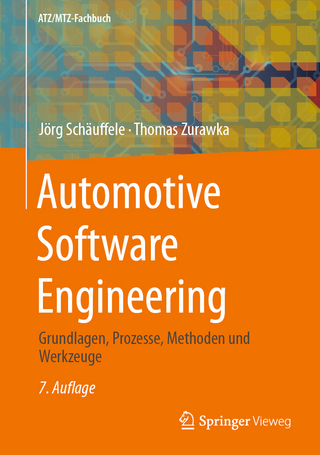
Software Architecture Patterns for Serverless Systems
Packt Publishing Limited (Verlag)
978-1-80020-703-5 (ISBN)
A professional's guide to solving complex problems while designing modern software
Key Features
Learn best practices for designing enterprise-grade software systems from a seasoned CTO
Deeper your understanding of system reliability, maintainability, and scalability
Elevate your skills to a professional level by learning the most effective software design patterns and architectural concepts
Book DescriptionAs businesses are undergoing a digital transformation to keep up with competition, it is now more important than ever for IT professionals to design systems to keep up with the rate of change while maintaining stability.
This book takes you through the architectural patterns that power enterprise-grade software systems and the key architectural elements that enable change (such as events, autonomous services, and micro frontends), along with showing you how to implement and operate anti-fragile systems.
First, you'll divide up a system and define boundaries so that your teams can work autonomously and accelerate innovation. You'll cover low-level event and data patterns that support the entire architecture, while getting up and running with the different autonomous service design patterns.
Next, the book will focus on best practices for security, reliability, testability, observability, and performance. You'll combine all that you've learned and build upon that foundation, exploring the methodologies of continuous experimentation, deployment, and delivery before delving into some final thoughts on how to start making progress.
By the end of this book, you'll be able to architect your own event-driven, serverless systems that are ready to adapt and change so that you can deliver value at the pace needed by your business.
What you will learn
Explore architectural patterns to create anti-fragile systems that thrive with change
Focus on DevOps practices that empower self-sufficient, full-stack teams
Build enterprise-scale serverless systems
Apply microservices principles to the frontend
Discover how SOLID principles apply to software and database architecture
Create event stream processors that power the event sourcing and CQRS pattern
Deploy a multi-regional system, including regional health checks, latency-based routing, and replication
Explore the Strangler pattern for migrating legacy systems
Who this book is forThis book is for software architects who want to learn more about different software design patterns and best practices. This isn't a beginner's manual – you'll need an intermediate level of programming proficiency and software design to get started. You'll get the most out of this software design book if you already know the basics of the cloud, but it isn't a prerequisite.
John Gilbert is a CTO with over 30 years of experience in architecting and delivering software systems across many industries. His cloud journey has spanned all the levels of cloud maturity, from lift and shift and software-defined infrastructure to microservices and continuous deployment. He was an early serverless adopter and put his first serverless workloads into production just months after AWS Lambda's introduction. He has also authored Cloud Native Development Patterns and Best Practices and JavaScript Cloud Native Development Cookbook. He finds delivering serverless solutions to be, by far, the most fun and satisfying, as they force us to rewire how we reason about systems and enable us to accomplish far more with much less effort and risk.
Table of Contents
Architecting for Innovation
Defining Boundaries and Letting Go
Taming the Presentation Tier
Trusting Facts and Eventual Consistency
Turning the Cloud into the Database
A Best Friend for the Frontend
Bridging Intersystem Gaps
Reacting to Events with More Events
Choreographing Deployment and Delivery
Don't Delay, Start Experimenting
| Erscheinungsdatum | 02.08.2021 |
|---|---|
| Verlagsort | Birmingham |
| Sprache | englisch |
| Maße | 75 x 93 mm |
| Themenwelt | Mathematik / Informatik ► Informatik ► Software Entwicklung |
| Mathematik / Informatik ► Informatik ► Theorie / Studium | |
| ISBN-10 | 1-80020-703-4 / 1800207034 |
| ISBN-13 | 978-1-80020-703-5 / 9781800207035 |
| Zustand | Neuware |
| Haben Sie eine Frage zum Produkt? |
aus dem Bereich


